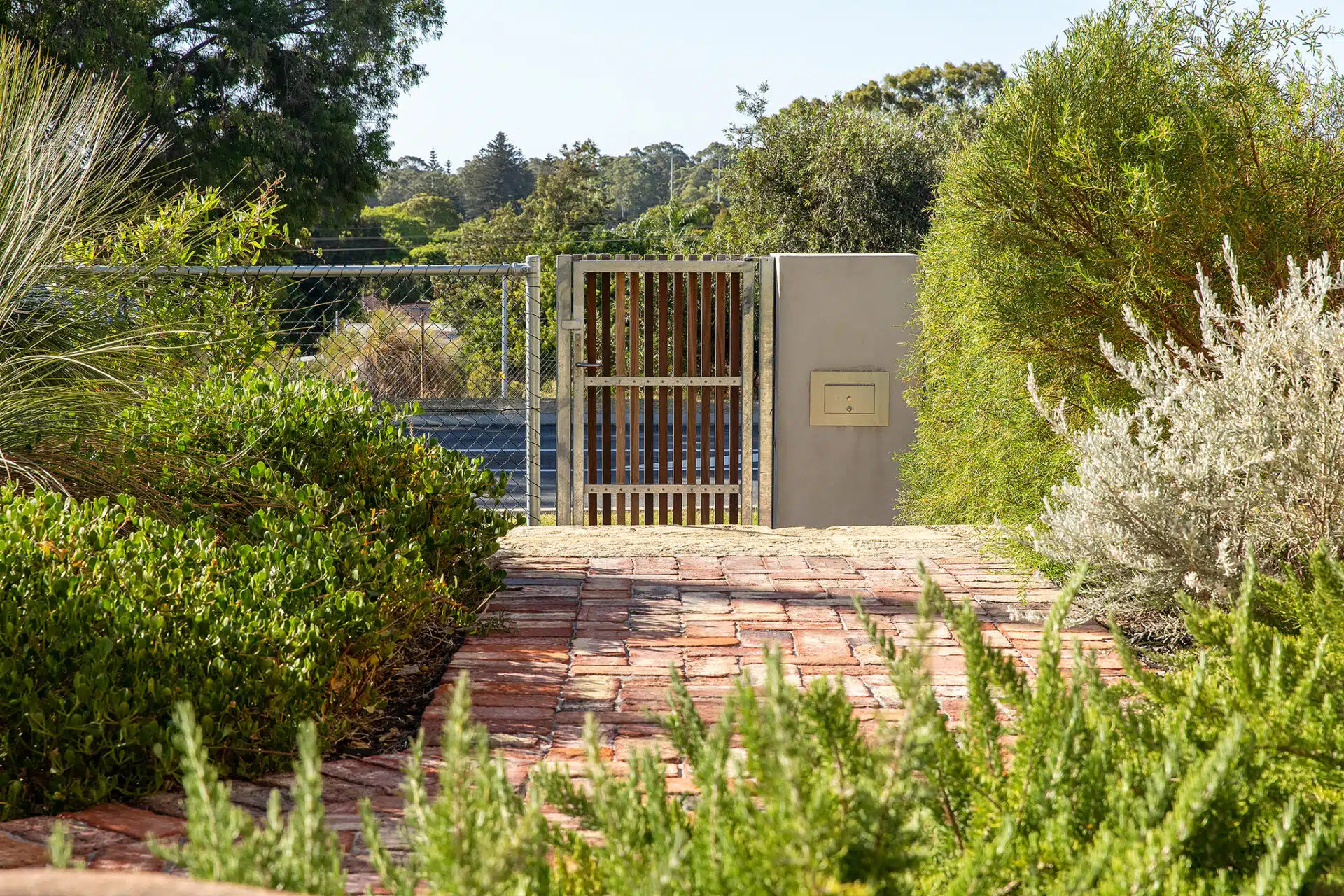Native plants support local ecosystems while preserving the unique character and heritage of Australia. With some planning and forethought, you can create a range of appealing garden styles while incorporating native plants and enhancing the hardiness of your landscape. There are plenty of reasons to incorporate native plants into your next garden project, let’s look at some ways bringing natives into the mix can pay dividends.

Preserve Local Ecosystems and Biodiversity
Western Australia’s biodiversity is globally unique due to the sheer expanse of our state, climate diversity and vast wilderness areas. WA has around 13,000 species of native plants, some yet to be formally named, and the southwest of WA is one of 35 globally recognised biodiversity hotspots.
The Swan Coastal Plain encompasses Perth and surrounding suburbs and is home to over 1500 species of native plants endemic to the area. Planting natives endemic to your surroundings supports local ecosystems and provides valuable food and shelter for wildlife. Habitat becomes even more important as sprawl eliminates bushland and cuts off links between wildlife populations.

Maintain Regional Character and Heritage
Incorporating native plants into your landscape design contributes to maintaining the region’s natural beauty and helps preserve the unique character and heritage of Western Australia. Western Australia is rich in heritage, especially that of our First Nations People. The Noongar people of the southwest of Western Australia have utilised the abundance of native plants as a source of food, shelter, and materials to make tools for thousands of years. “Noongar people harvested all their food according to a deep spiritual food law. This food law was connected to a six-season cycle of movement across Noongar land: each season had its own basic diet” Dr Noel Nannup – Noongar Bush Tucker 2019.

Native Plants Thrive in Local Soil and Sunlight
To get the best out of your native garden, it is vital to consider its soil and sunlight requirements.
Selecting native plants endemic to your region will ensure they are well-suited to your site’s needs and limit the need for extensive soil remediation and maintenance. There are a number of typical soil profiles across WA, which can be broadly broken into the following regions. Here’s a bit about each and a few native plants you might expect to thrive in them:
Quindalup Dunes:
Soil Type: Sandy coastal dune soils with limited nutrient content and good drainage.
Soil Profile: Typically characterized by a deep layer of sand with relatively low organic matter content.
Native Plants: Coastal Wattle (Acacia sophorae), Pigface (Carpobrotus spp.), Coast Banksia (Banksia integrifolia).
Planting Strategy: As the soil is sandy and nutrient-poor, successful planting involves improving soil fertility or selecting plants that are adapted to such conditions.
Location: Southwestern coastal areas, relatively far from Perth, such as the Margaret River region.
Spearwood Dunes:
Soil Type: Sandy soils influenced by coastal processes, with variable nutrient levels.
Soil Profile: Comprised primarily of sand with some variations in nutrient content due to coastal influences.
Native Plants: Coastal Tea Tree (Leptospermum laevigatum), Rottnest Daisy (Trachymene coerulea), Coastal Beard Heath (Leucopogon parviflorus).
Planting Strategy: The sandy soils may require improved water retention and nutrient supplementation, or choosing plants naturally adapted to nutrient-poor sandy environments.
Location: Coastal areas closer to Perth, including regions around Fremantle and Rockingham.
Bassendean Dunes:
Soil Type: Sandy coastal dune soils with variation in elevation and nutrient content.
Soil Profile: Sandy soils with potential variations based on elevation and proximity to the coast.
Native Plants: Grey Saltbush (Atriplex cinerea), Coastal Banksia (Banksia littoralis), Quokka Grass (Triodia spp.).
Planting Strategy: Considering the sandy nature of the soils, improving organic matter and nutrient content can be important, along with selecting plants that thrive in sandy conditions.
Location: Coastal areas relatively close to Perth, including suburbs along the northern and northeastern coast.
Pinjarra Plain:
Soil Type: Varies from sandy soils to loams and clays, with moderate fertility.
Soil Profile: Diversity of soils, including sandy, loamy, and clayey textures, with moderate nutrient levels.
Native Plants: Wandoo (Eucalyptus wandoo), Tuart (Eucalyptus gomphocephala), Drooping Sheoak (Allocasuarina verticillata).
Planting Strategy: The choice of plants should consider the specific soil type, with some adaptation to various textures within the area.
Location: South of Perth, including areas around Mandurah and Pinjarra.
Ridge Hill Shelf:
Soil Type: Diverse soils influenced by hilly terrain, with variations in fertility.
Soil Profile: Depending on the location, soils can range from shallow rocky soils to deeper loams and clays.
Native Plants: Jarrah (Eucalyptus marginata), Marri (Corymbia calophylla), Zamia Palm (Macrozamia spp.).
Planting Strategy: Plant selection should be tailored to the specific soil type, considering drainage and nutrient-holding capacity.
Location: Eastern and southeastern areas, including parts of the Darling Range near Perth.
Darling Plateau:
Soil Type: Various soils on elevated terrain, ranging from shallow to deeper profiles.
Soil Profile: Diversity of soil profiles, including rocky shallow soils and deeper loams, influenced by elevation.
Native Plants: Wandoo (Eucalyptus wandoo), Karri (Eucalyptus diversicolor), Grass Trees (Xanthorrhoea spp.).
Planting Strategy: Adapting plant choices to the specific soil depth and composition is crucial for successful establishment.
Location: Inland areas to the east of Perth, encompassing parts of the Darling Range and plateau regions.
Alluvial Soil:
Soil Type: Rich soils formed from deposited sediments by flowing water, with good fertility and drainage.
Soil Profile: Typically characterized by a mix of sand, silt, and clay particles, contributing to high fertility.
Native Plants: River Red Gum (Eucalyptus camaldulensis), Swamp Paperbark (Melaleuca rhaphiophylla), Weeping Lilly Pilly (Waterhousia floribunda).
Planting Strategy: Alluvial soils offer good conditions for a range of plants, but careful plant selection can optimize growth and prevent competition with weeds. Your options for planting if you’re lucky enough to have this soil type are many.
Location: Along major rivers and their floodplains, including areas near Perth like the Swan River and its tributaries.

Native Plants have Different Purposes.
Like any plant, natives can be used for foundation, border, and feature plants. If you live in an apartment or a home with a small courtyard, you will be pleased to know that WA native plants also thrive in pots with soil and drainage appropriate to their needs. Strategic planting of some native species can alleviate pest problems by attracting predatory birds and insects. Native plants will attract native insects, lessen the need for pesticides, and restore biological diversity. A carefully considered feature tree can provide your garden with shade. When planting a native tree such as a Eucalyptus species, consider the space available and how tall the tree is expected to grow.

Native Plants Attract and Support Local Wildlife
A great reason to incorporate local native plants into your garden design is to provide essential habitat for local fauna. Native plants that are well-suited to the local ecosystem can provide food and shelter for insects, reptiles, and birds. If you live in the Perth Hills, you may be lucky to attract marsupials such as quenda and brushtail possums.

Natives Reduce Supplemental Watering
Native plants are well-suited to the local climate and soil conditions in Western Australia, which means they require less supplemental watering than non-native species. Laying mulch will replicate the organic matter that typically builds up in the wild to maintain soil moisture further.

Natives Reduce the Need for Pesticides and Fertilisers
Native plants are often more resistant to local pests and diseases than non-native species in Western Australia, which means they require fewer pesticides and fertilisers. By incorporating native plants into your landscape design, you can reduce the need for these chemicals and create a healthier environment for your family and wildlife, and save yourself time and money on maintenance.

Use Native Plants for Sequential Blooms and Foliage Changes
When selecting native plants, it’s possible to choose plants that bloom at different times and have contrasting foliage colours and textures to set off your garden design.Western Australian wildflowers start blooming from June through to October, depending on where in our vast state they are situated. Most wildflowers on the Swan Coastal Plain bloom from August to October, known as the Noongar season of Djilba and the dryer season of Kambarang (or second Spring). Some plants you could consider:• Cat’s Paw and Kangaroo Paws flower at different times of the year to provide you with a variety of colour changes from July through to November.
• Purple and blue flowers such as – the Australian Bluebell and Hairy Annual Bluebell will flower from May to December, while the Angled-Stem Dampiera and Royal Robe flower from August to January.
• Yellow flowering plants such as native Acacia species, of which there are many, flower at different times of the year for staggered or sequential blooms, or the perennial Grey Cottonhead has attractive yellow flowers from August through to February.
• Banksia flowers look stunning while being a good source of nectar and will attract wildlife, especially birds and insects, to your garden.
• Annuals such as Everlasting daisies make a beautiful display from August to October.
• Grasses and sedges can provide contrasting foliage and will grow in pots, garden beds and around ponds or water features. The grasses also attract butterflies.
Western Australian native plants lend themselves perfectly to layering with a considerable assortment of ground covers, grasses and shrubs to choose from. Not only will you attract birds, butterflies, and other pollinators to your garden by planting native flowering plants, but your garden will be easy-care and water-wise.

Native Plants have Traditional Uses
Native plants have been used for traditional purposes by the Noongar people in and around Perth (Boorloo) for thousands of years. Your plant choices can help you create a connection to the local culture and history. You can incorporate native plants into your landscape design simply for their beauty, or you may like to cultivate a bush tucker garden where you can utilise plants for their medicinal or culinary properties. Native, edible plants have been expanding in awareness in the broader culinary world, for good reason. Though most are not commercially grown for their produce, bush food plants can be a delicious taste of the truly local. A locally published book, “Noongar Bush Tucker- Bush food plants and Fungi of the Southwest of Western Australia” by Noongar elder Vivienne Hansen and educator, John Horsfall (UWA Publishing), is a comprehensive guide to bush tucker plants, should you wish to pursue this further.

Local Nurseries and Organisations Specialising in Native Plants in Western Australia
To help you identify and select native plants endemic to your area, several organisations and nurseries can assist.• Western Australian Herbarium’s Florabase is a searchable database of all Western Australian native plants. Florabase provides information such as the ideal locations and conditions for planting and vital statistics such as how big plants grow and what soil conditions they need to thrive.
• Friends of King Park have some terrific resources and hold regular native plant sales.
• The Wildflower Society of Western Australia has an alphabetical list of local nurseries that sell native plants in Western Australia.
• Envirohouse runs a plants-to-residents program in the Town of Bassendean and the City of Bayswater.
• Or have a chat with TDLs landscape designers to help you choose plants well-suited to the local climate and soil conditions and your lifestyle.
As you can see, the benefits of incorporating native plants into your home landscape design in Western Australia are many. By working with local nurseries and organisations specialising in native plants, you can create a beautiful and eco-friendly landscape that complements the natural beauty of Western Australia.
If you’re designing a garden with TDL, we are always thrilled to incorporate natives into our planting plans. Get in touch with TDL to discuss your native garden today.

